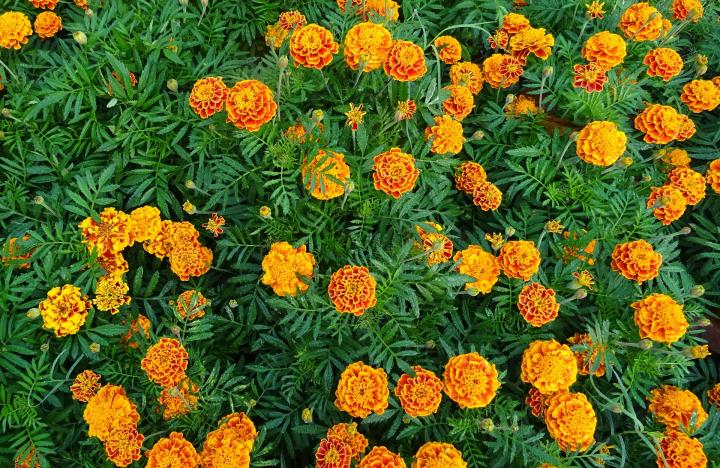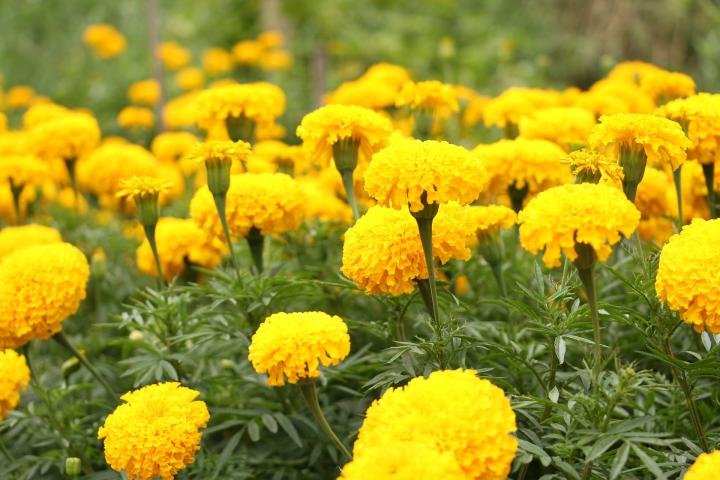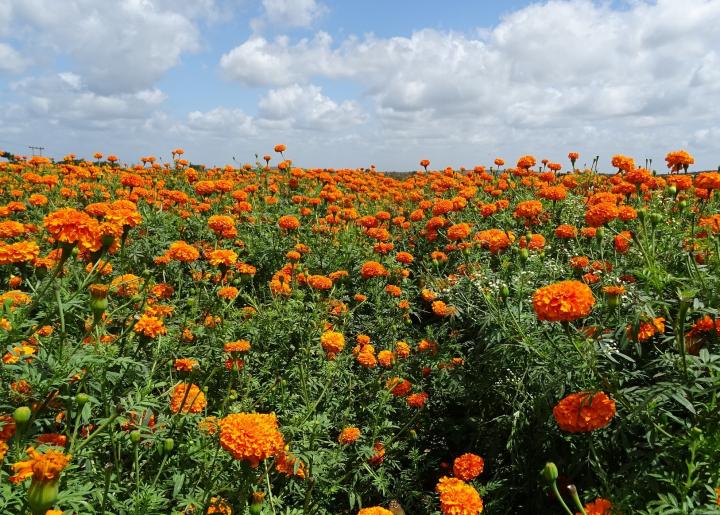
Photo Credit
Pixabay
Subhead
Sunshine on a Stem: Learn Why to Add These Sunny Blooms to Your Garden!
Read Next
Types
Marigolds have been stereotyped, but they offer tremendous variety. Both the American and French marigolds are generally aromatic, too, although some folks find the scent to be a bit overwhelming. Keep that in mind when choosing a planting site.
Marigolds have daisy- or carnation-like flower heads produced singly or in clusters. Although there are some 50 species, most we see in the garden are one of the following:
- Tagetes erecta (aka African marigolds, American marigolds, or Mexican marigolds): This species is the tallest and most upright marigold, reaching 3 to 4 feet in height and producing large, full flowers. According to Nate Dalman of the University of Minnesota Extension, “Despite the names, African marigolds did not originate in Africa and instead are called that because they were first imported to Europe via a trade route that passed through northwest Africa.” They’re native to Mexico and Central America and will thrive even under drought-like conditions.
- T. patula (aka French marigolds): This species tends to be smaller, bushier, and more compact than T. erecta. They are often wider than they are tall. Elegant and eye-catching, they have relatively demure flowers and usually grow from 6 inches to 2 feet tall. They are better suited to rainier conditions than the other Tagetes species.
- T. tenuifolia (aka signet marigolds): These petite marigolds do well in hot, dry sites and make for a beautiful edging plant. They rarely reach more than a foot in height.
French Marigolds (T. patula)
- ‘Little Hero’ Series: 7-inch-tall plants with large, double carnation flowers in 7 color combinations of maroon, orange, and yellow.
- ‘Hero’ Series: 10-inch-tall plants with double carnations, large (2-inch-wide) flowers in 7 different combinations of yellow, orange, and maroon.
- ‘Bonanza’ Series: 2-inch-wide, double carnation flowers in 5 different combinations of yellow, orange, and maroon on bushy, compact 8-inch-tall plants.
- ‘Aurora’ Series: 1-foot-tall plants with wide-petaled, anemone-like flowers in shades of maroon, yellow, and orange.
- ‘Janie’ Series: Early blooming. 8-inch-tall plants are perfect for container growing. Double carnation type flowers in 6 different combinations of yellow, orange, and maroon.
- ‘Boy O’ Boy’ Series: 6-inch-tall prolifically flowering plants with flowers in shades of maroon, yellow, and orange

American/African Marigolds (T. erecta)
- ‘Jubilee’ Series: 2-foot-tall plants with dense, double flowers in shades of yellow and orange.
- ‘Gold Coin’ Series: 1½- to 2-foot-tall plants with large (5-inch-wide) double blooms in gold, yellow, and orange.
- ‘Safari’ Series: 1-foot-tall plants with flat-topped, large flowers in shades of maroon, yellow, and orange.
- ‘French Vanilla’: 3-inch-wide flowers are pure creamy white. Minimal scent. Plants are 1½ to 2 feet tall.
Where to Buy Marigolds
Gardening Products
Also, where does the insect-replling odor come from? The marigold's leaves, flowers? a scientific explanation would be nice, but a to-the-point one is ok
I have been saving the dead heads from my marigolds for years and have had average success in planting them in pots in the spring. This year, however, none of the seeds germinated in any of the pots in which I planted them. I know the seeds were from last year's crop. My concerns are: how much soil do you put on the seeds--just barely covered, an inch, how much? Will seeds from two or three previous years germinate? How wet should you keep the soil be during the germinating process-damp or well watered.
let the seeds dry out completely first and then plant out the seeds from the marigolds in a middle size pot and use multi purpose compost
hi jan,
just a light sprinkle of soil do not put to much on
I do the same with all my plants that seed. But I introduce new seed every so often. Every 3 years with marigolds. Never have any problems.
Tell me. The. Pesticides for. Marigold
I've grown 40 Marigolds over 5 years. I have grown them from seeds, bought saplings from market, etc. And I found out that Marigolds tend to attract Slugs quite unusually. I've tried everything to get rid of these slugs without killing them. But eventually I had to spray salt on the leaves of my Marigold.... Next morning you see a slimy trail leading to a dead slug.
my teacher gave me these plant-able cups to plant dwarf marigolds in. I used one to plant four...and they grew, but then my mom came over and tore them apart, saying that they would grow better that way. but I took a close look at the plants and I could see torn roots...and she insisted to put in fertilizer. Was she right to do so?
- « Previous
- 1
- 2
- …
- 10
- Next »











Comments